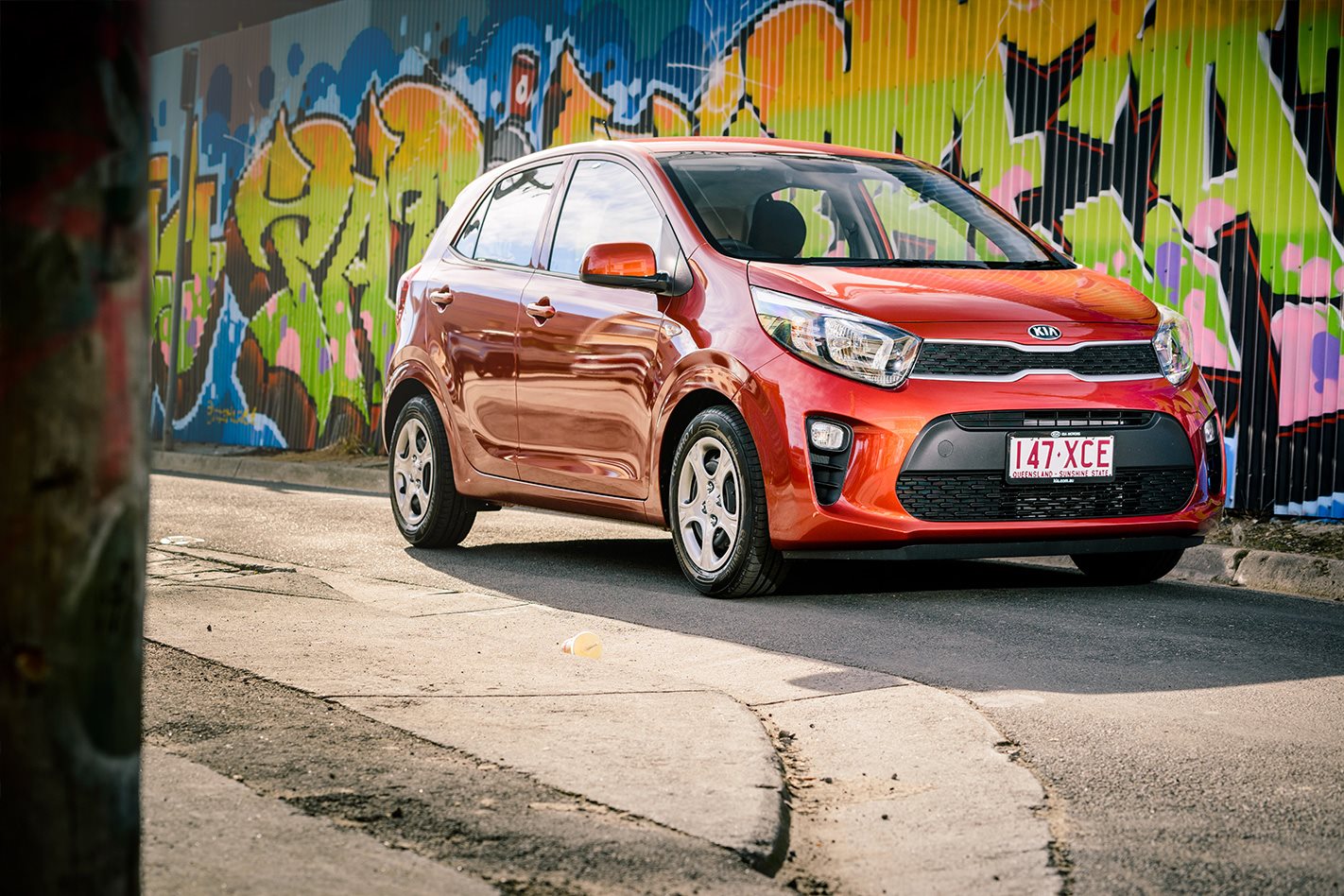
The name Picanto seems to be derived from the Spanish word picante, which translates roughly to mean ‘spicy’ or ‘zesty’ in English. And so far, my little orange spice pot has put plenty of zest into my daily commute.
When fitted with a five-speed manual gearbox, the Kia Picanto S is a very keen $14,190. My car has just one option fitted: Pop Orange metallic paint costing $520. It should be noted the only paint colour not charged for is the Kelvinator-inspired Clear White.
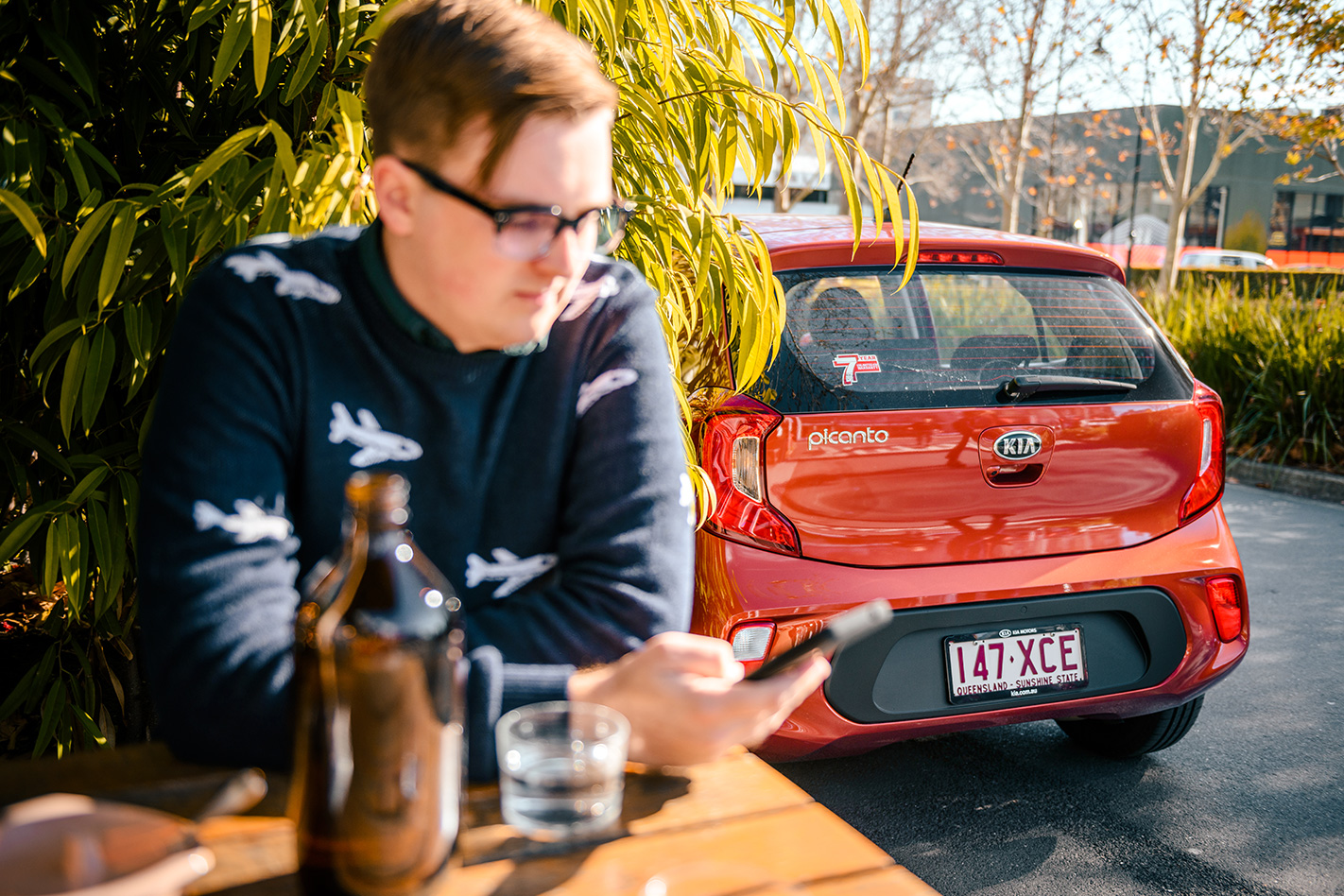
That manual gearbox has me high-fiving myself, especially after my panning of the transmission in my last long-termer, the auto-only Suzuki Baleno GLX.
I think I’m in safe company to say this: a manual ’box should be the first choice for any discerning enthusiast.
However, the stark reality is manual sales are on a crash course for rock bottom, and modern autos are now so good that even ardent car lovers defend and support their choice. The perception is an auto is easier live with day-to-day, but let me, and the Picanto, offer a counterpoint.
Not only is the manual gearbox in this little hatch $1500 cheaper than the auto – around 10 percent of the purchase price, so it’s significant – but it’s a genuinely likeable set-up thanks to a light, progressive clutch action, and an easy, positive shift feel. You can simply breathe on the lever and the Kia will pluck another gear.
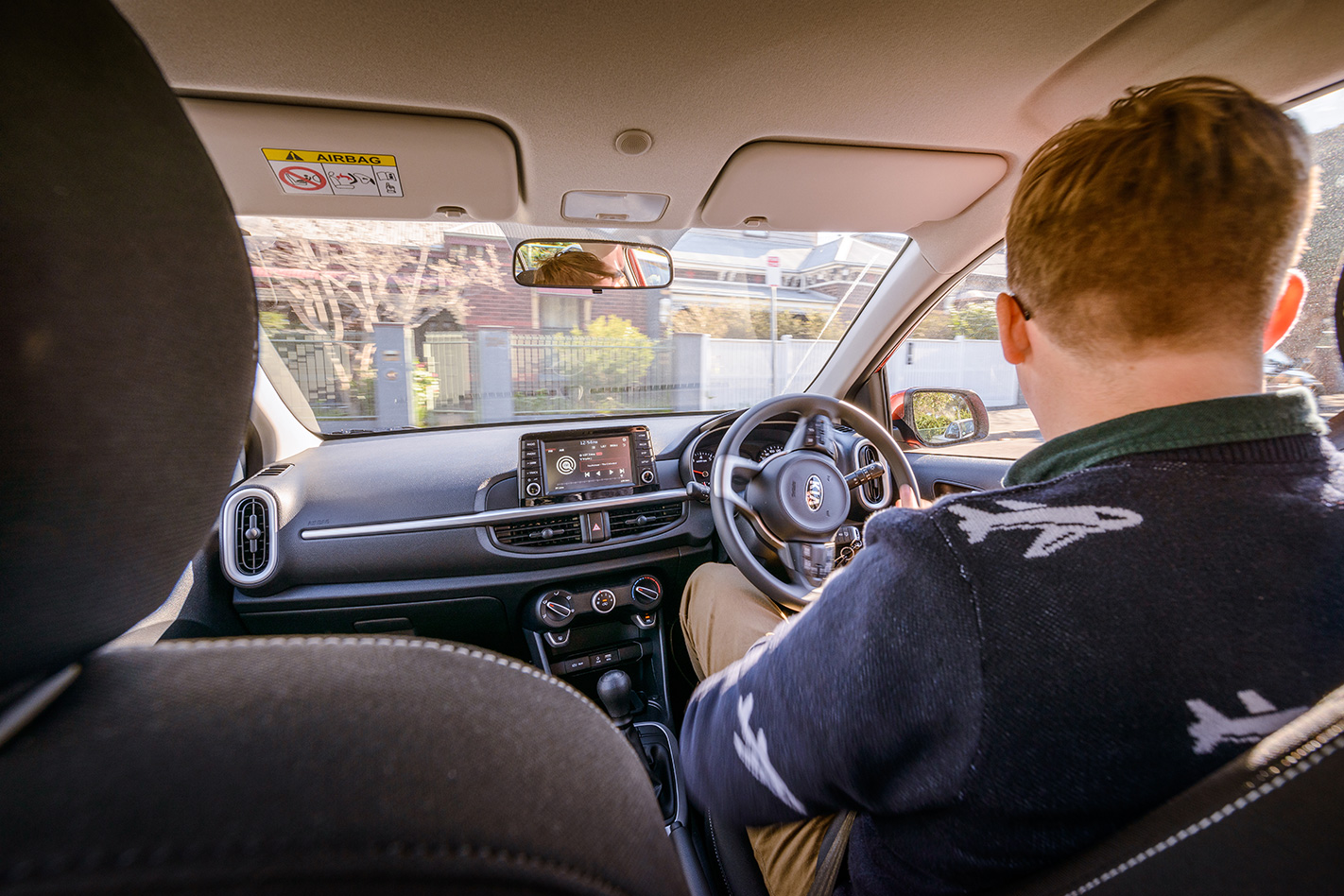
I have several more months with the Picanto to see how the transmission improves or hinders my day-to-day commute, but so far so good.
It’s only been on our fleet for a few weeks but the Picanto has already attracted plenty of attention from the rest of the Wheels team, many of whom are accustomed to driving much quicker and significantly pricier metal.
A combination of annual leave and the need for a larger vehicle for my social plans has meant requests for a steer have been obliged for the most part.
But not anymore, for their desire to get a taste of the Picanto is only outstripped by my infatuation with it. My recent move has provided a longer, and much more interesting commute to work that has allowed me to lap up the extra layer of involvement the Picanto’s manual ’box provides.
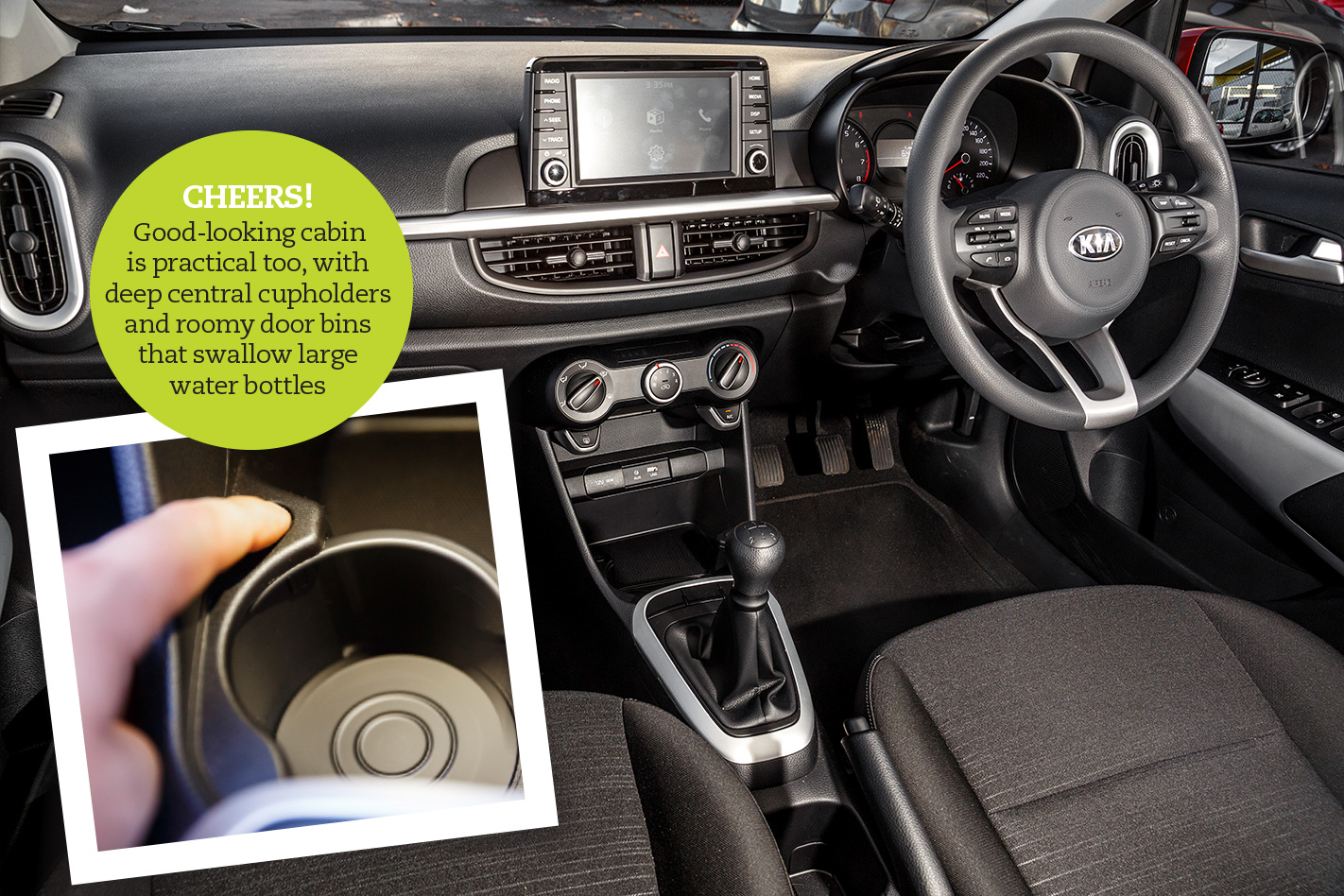
Inside the cabin, my expectations were for more austere drunk tank than well-trimmed grand tourer, but the Picanto surprises.
It’s not a world of luxury but for the class and price point, it’s a rather pleasant place to spend time. The 7.0-inch touchscreen infotainment system is a sleek unit, and despite the prevalence of plastic, it’s not the shiny, scratchy stuff that can plague this segment.
On-road impressions have been relatively brief so far, but overwhelmingly positive. Kia’s efforts to tune the suspension for Aussie roads have paid off, with the Picanto feeling both nimble and chuckable, with a ride that the Aussie team can be proud of – there are no light-car jitters here.
But the real joy so far has been the engine. The 1.2-litre naturally aspirated four cylinder might sound uninspiring on paper – it makes just 62kW and 122Nm – but it’s rev-happy and plenty gutsy enough to whip the sub-tonne hatch up to speed. Sure, it’s not going to break any records, but it never feels sluggish or underpowered.
I’m eager to delve deeper into the ownership experience of the Picanto in the coming months to see if the buzz from our first few weeks can be sustained.
Tell in-built nav where to go
Among the Picanto’s list of standard features you’ll notice a glaring omission: sat-nav. In fact, you can’t even order it on the Picanto as an option. For the majority of the population this won’t be a problem as the little Kia comes with Apple CarPlay/Android Auto smartphone connectivity as standard, meaning its screen integrates with your phone’s in-built guidance. Once you go Google Maps, which is smarter and faster than most others, you won’t go back.
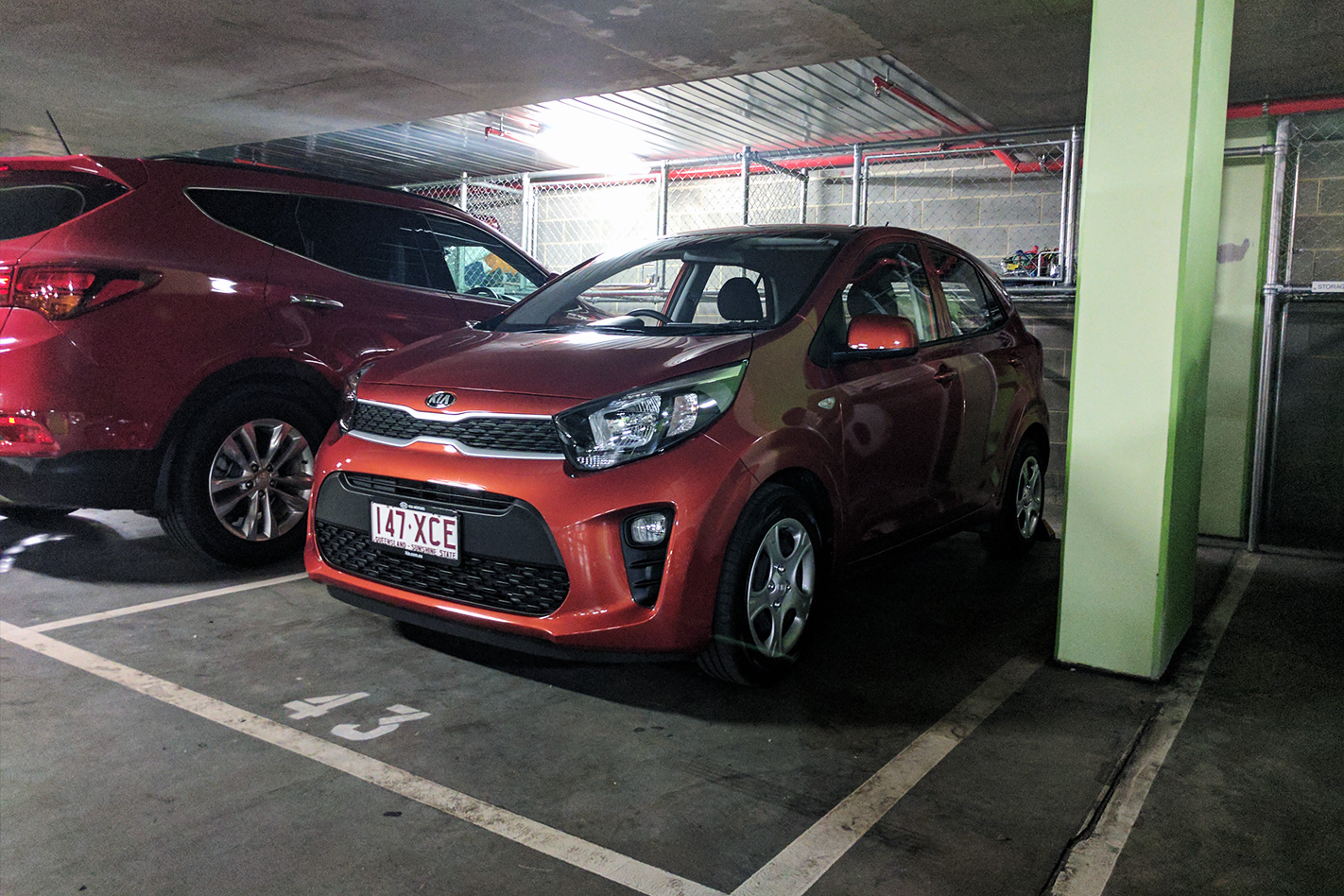
Parking joys
The new Chateau de Kirby is — like any good millennial dwelling — an inner-city apartment building. This means regularly navigating an underground carpark. Throw in a rather obtrusive cement pillar and a neighbouring SUV, and my daily parking routine has become quite a test of the Picanto’s manoeuvrability. Happily, the light steering, great vision, minimal overhangs, crisp rear camera, and diminutive stature make it a breeze. Fits like a glove, every time. Attempting the same move in a Kia Carnival? Not so much…
Update #2
LIFE with the Kia Picanto has been relative this month; relatively uneventful, fuss-free, and without any major downers.
Even the steering in the Picanto is relative – to your speed, that is. You see, the electric steering in the Kia changes its weighting depending on how fast you are moving, and it is one of the hidden delights of the car.
At low speeds, the steering wheel can be twirled with ease, spinning through its 2.7-turns lock-to-lock effortlessly; brilliant for car parks and slow-speed manoeuvring.
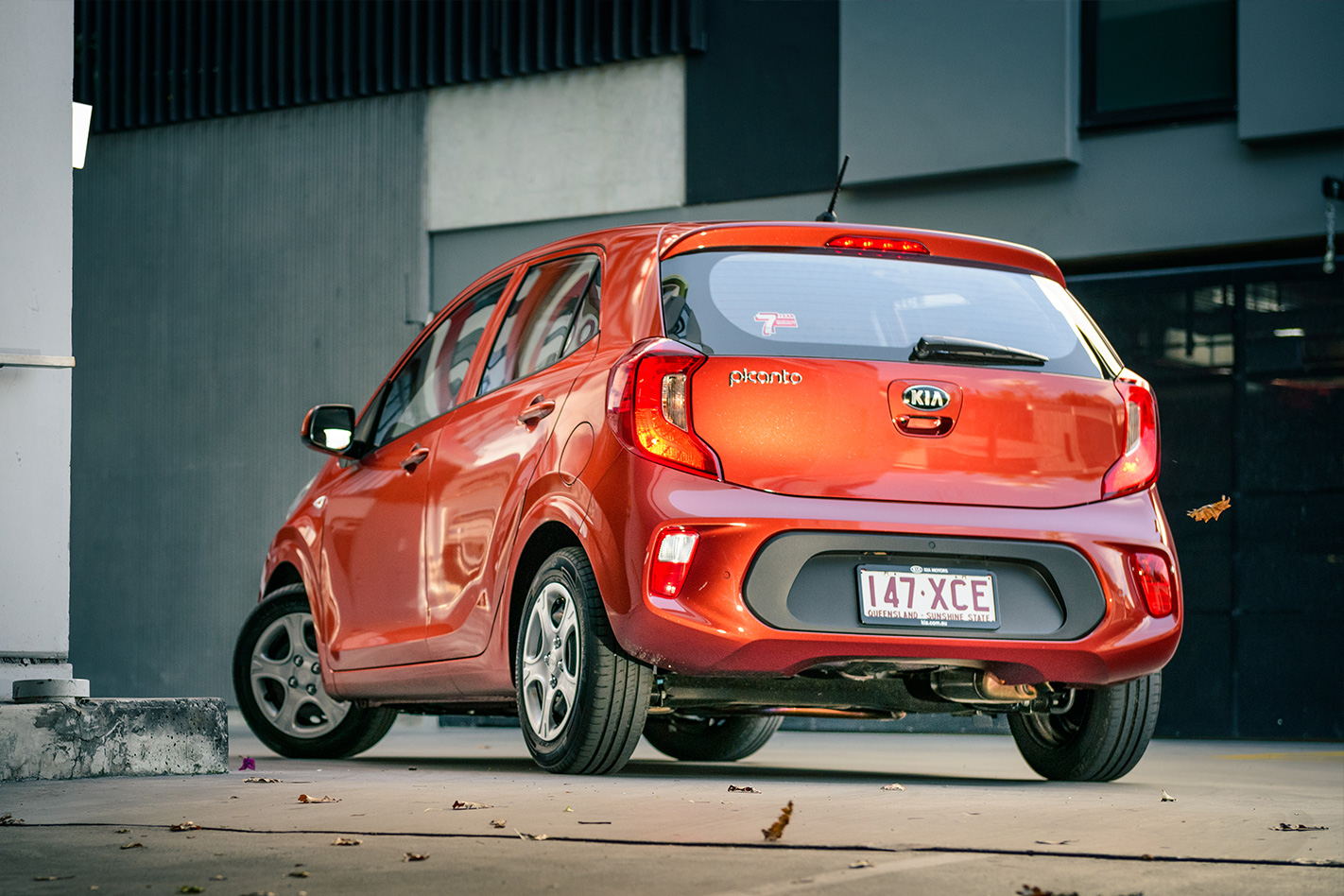
Pick up the pace to ‘around town’ levels and there is more weight to the wheel, which nails the middle ground between too light, where the car can feel remote, and too heavy, where regular day-to-day driving can be tiresome.
At highway speeds the Picanto S feels surefooted, in part thanks to the variable assistance. At 100km/h the weight of the wheel again sits in a sweet spot where it offers just enough resistance to eliminate any ‘sneeze-factor’ at the straight ahead, but with nice tactility when applying some input.
Even the inside of the cabin has been a lesson in relativity. One of the Picanto’s weak points is road noise at highway speeds, which can become quite loud. This is most noticeable in rainy conditions, or on roads with a less-than-perfect seal. Small rocks pitter-patter against the inside of the wheelarches – I cope with this by imagining I’m in a stripped-out race car. But you have to look at it with context; road noise is a class norm for light econo-cars like the Picanto.
Recently, in a late-night Swedish-meatball-fuelled haze (egged on by my home-decorating girlfriend), I bought a new lounge chair. Hauling my new package from the Ikea warehouse to my apartment meant the Picanto would face its first serious challenge.
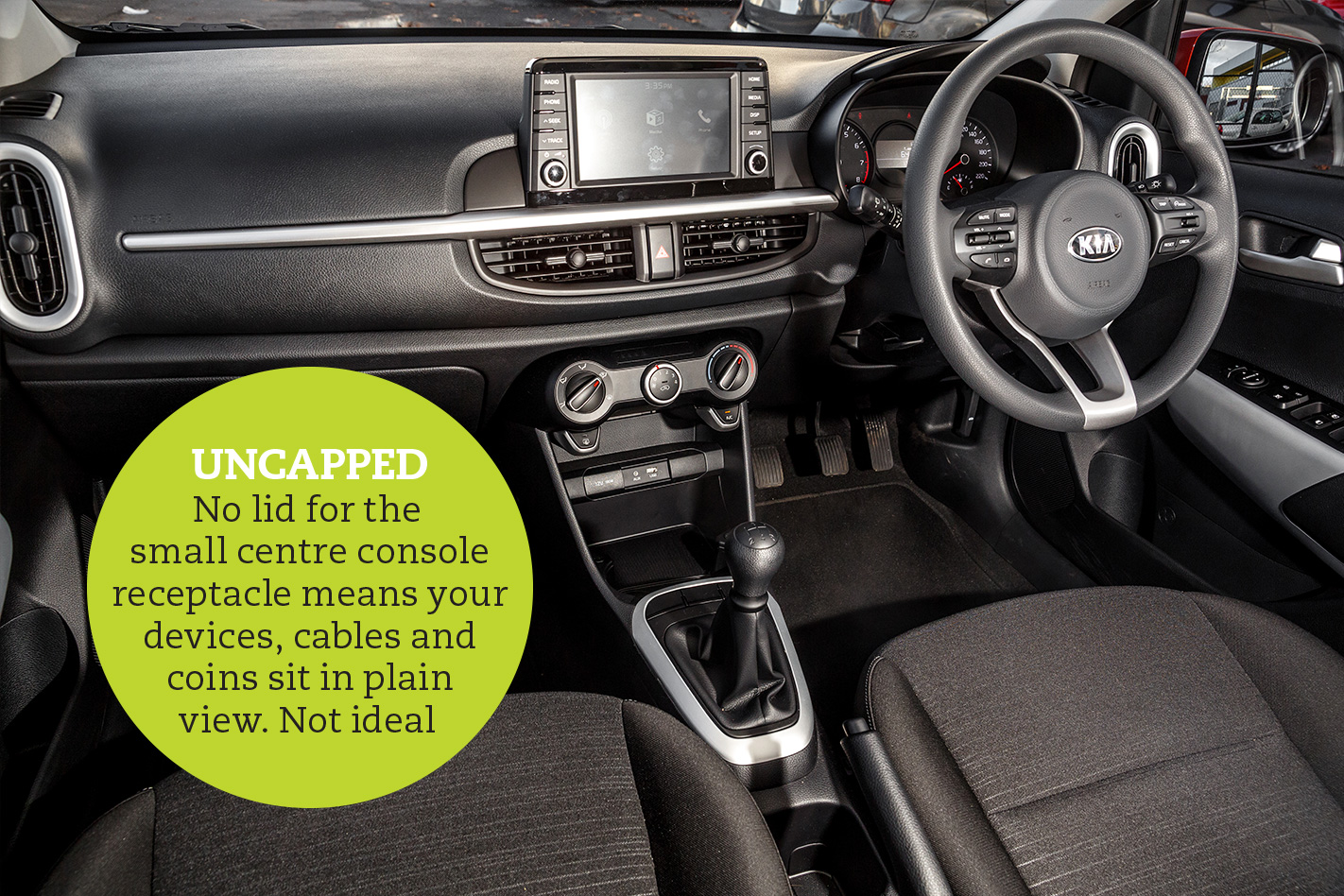
Unlike pretty much everything else bought from the Great Blue Swedish Hall, this lounge wasn’t a flat-pack item, and was roughly large enough to fill a small SUV boot.
On paper, the Picanto has 255 litres of luggage space with the rear seats upright, and 1010 with them folded. But what does that mean in reality? Well, with the backrest neatly stowed, my new purchase slotted into the Picanto with room to spare.
It was an instructive exercise because it would be easy to dismiss the Picanto as limited in load-carrying ability due to its diminutive exterior dimensions. Yet the little Kia passed its toughest test so far.
Time to ring a couple of mates, then, and organise a weekend away to really put its fully loaded abilities to the sword.

Flick, flip… no flop
Lowering the rear backrests in the Picanto is simple and swift. Flick the latches on either side of the cargo area and the 60/40 split seat drops effortlessly.
A bout of stubbornness and machoism meant I attempted to lower the rear seats while holding a rug for my living room in one arm.
Could I have put the rug down? Yes. But I didn’t have to, and before my girlfriend could chastise me, the new purchase was stored inside the cabin.
Update #3
It was an innocent query from a co-worker: “So, how’s life with the Picanto going as a long termer?”
Yet it was a question that caused a bit of soul searching for myself and my little Korean companion. “Brilliant!” was my reply. And I was serious.
For the past three months I’ve seriously enjoyed my time with the Kia Picanto. But that wasn’t a satisfactory answer for old mate.
“Come on! Surely there is something you don’t like about it so far? It can’t be that good.”
To my own surprise I didn’t really have an answer for him. But it was cause for pause.
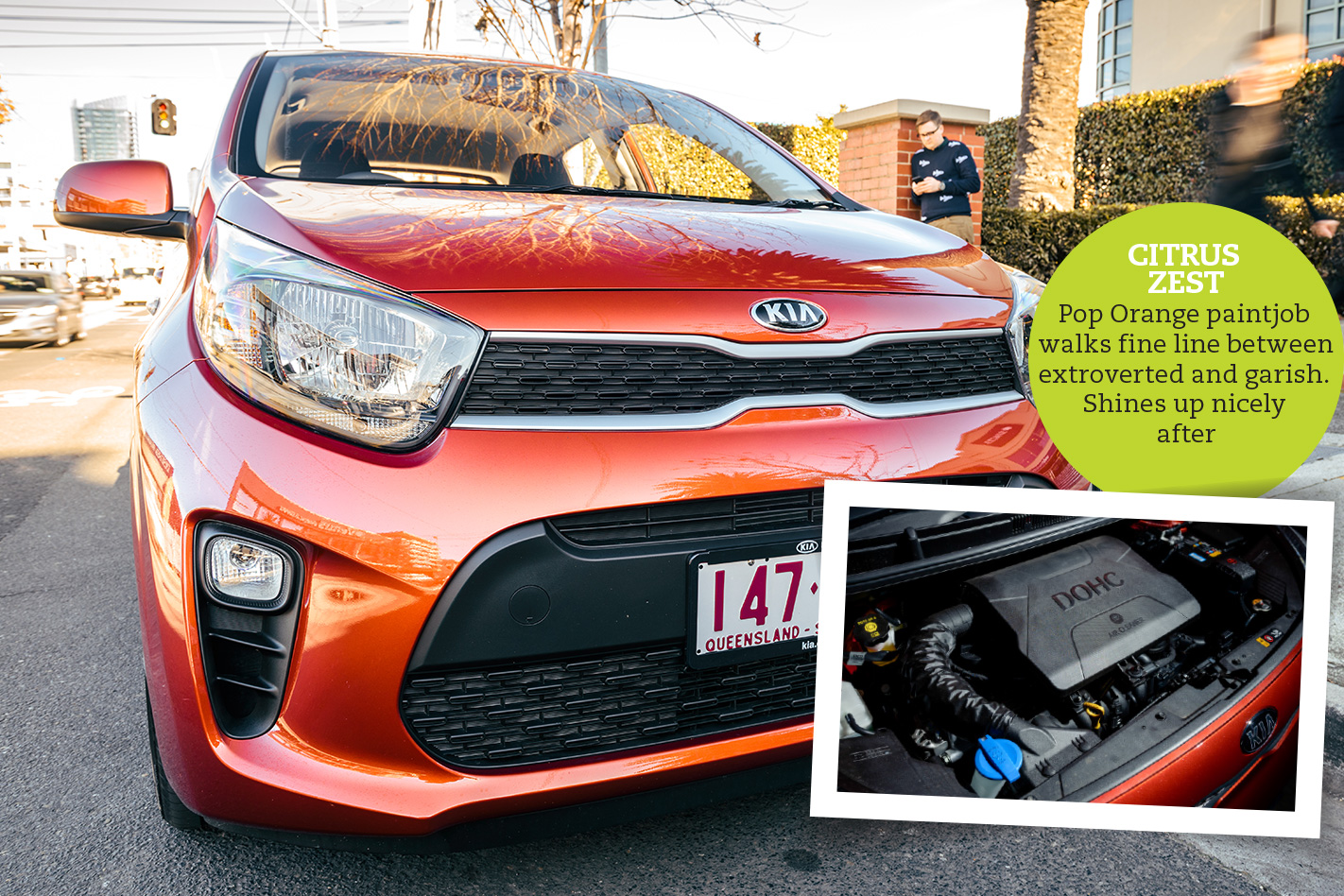
Had I been having so much fun working the three pedals and carving up traffic that I’d reached the halfway point of my time with the Picanto, and not come up with a serious gripe? No car is that good. There must be something that irked me. So for the next week there was some serious reflection.
What resulted was the following list of ‘problems’ I’ve come across with the Kia. The arm rest is hard plastic, making it an uncomfortable place to, well, rest your arm and elbow. Yes, I know – proper driving technique and all that. But perching an elbow on the arm rest during a long drive is acceptable in my books.
Even after three months I haven’t memorised the difference between the dial for volume, and the radio tuner. Both are marked with small stickers, but with eyes forward they look identical. I’ve inadvertently ended up scanning the FM waves when I intended on pumping the volume on a tune.
Weirdly, heavy freeway use this month didn’t see a discernible drop in fuel consumption despite Kia’s 4.2L/100km extra urban claim. In fifth gear, at 110km/h the 1.2-litre four-cylinder sits at over 3000rpm and offers around 400km per 29-litre tank.
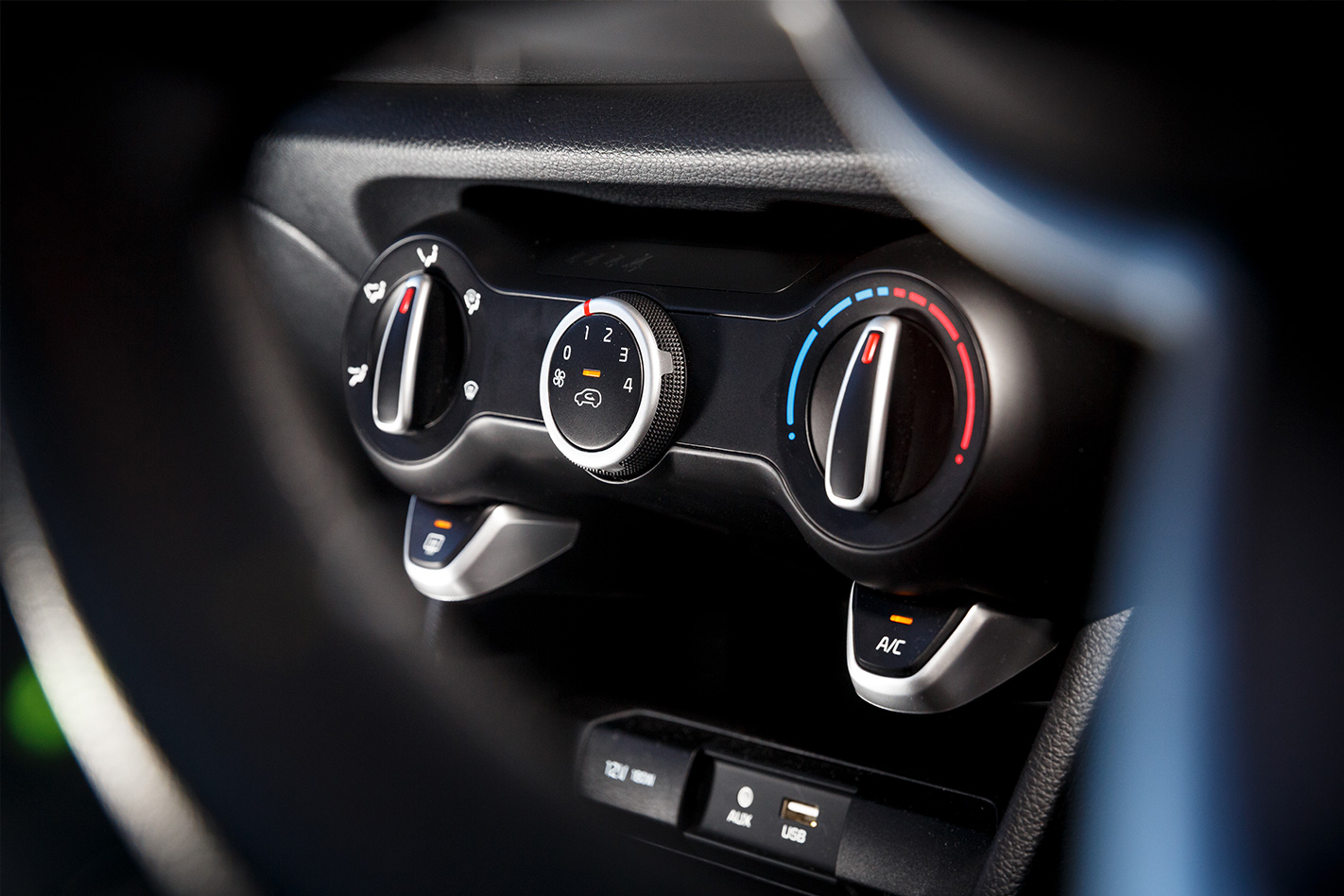
The climate control is probably the biggest mark against the Picanto’s name. Firstly, the heater takes a painfully long time to start functioning, which forces me to rug up with several layers for the first half of my commute home on cold Melbourne winter nights. Secondly, temperature control is a guessing game. Put the dial into the blue, and you could still have warm air being pushed out. Dial in the red? Cold air. You almost get the feeling the Picanto is taking your temperature suggestions on board, but will ultimately do as it pleases.
Admittedly these are relatively minor shortcomings with the little hatch, and there has been nothing that really knocks the shine off its impressive capabilities.
Yep, when you put all its great and not so good qualities in the context of the Picanto’s price and competitor set, nit-picking is not easy.
Lights, camera … Picanto?
The Picanto isn’t far off having its own trailer, after making a television debut recently. The Picanto claimed outright honours in Wheels Magazine’s very own Gold Star Cars award (October issue) which earned it a starring appearance on breakfast television (presented by Editor Inwood).
Its low depreciation, sub-$15k entry price, and the fact the manual gearbox provides brilliant saving in both fuel efficiency and overall cost are what clinched the Picanto’s prize. What next? A cameo on Dancing with the Stars?
Update #4
While it’s still a month until the 2018 Wheels Car of the Year winner is announced, we recently completed testing at the Lang Lang proving ground, and its surrounding areas, in what was a brilliant week.
I was part of the support team, which meant the Kia Picanto was left at the office while I absconded for seven long days of motoring nirvana.
But come the end of it all, with hundreds of gigabytes of photographs and video shot and the voting tally complete, it was still soothing to return to my Picanto.
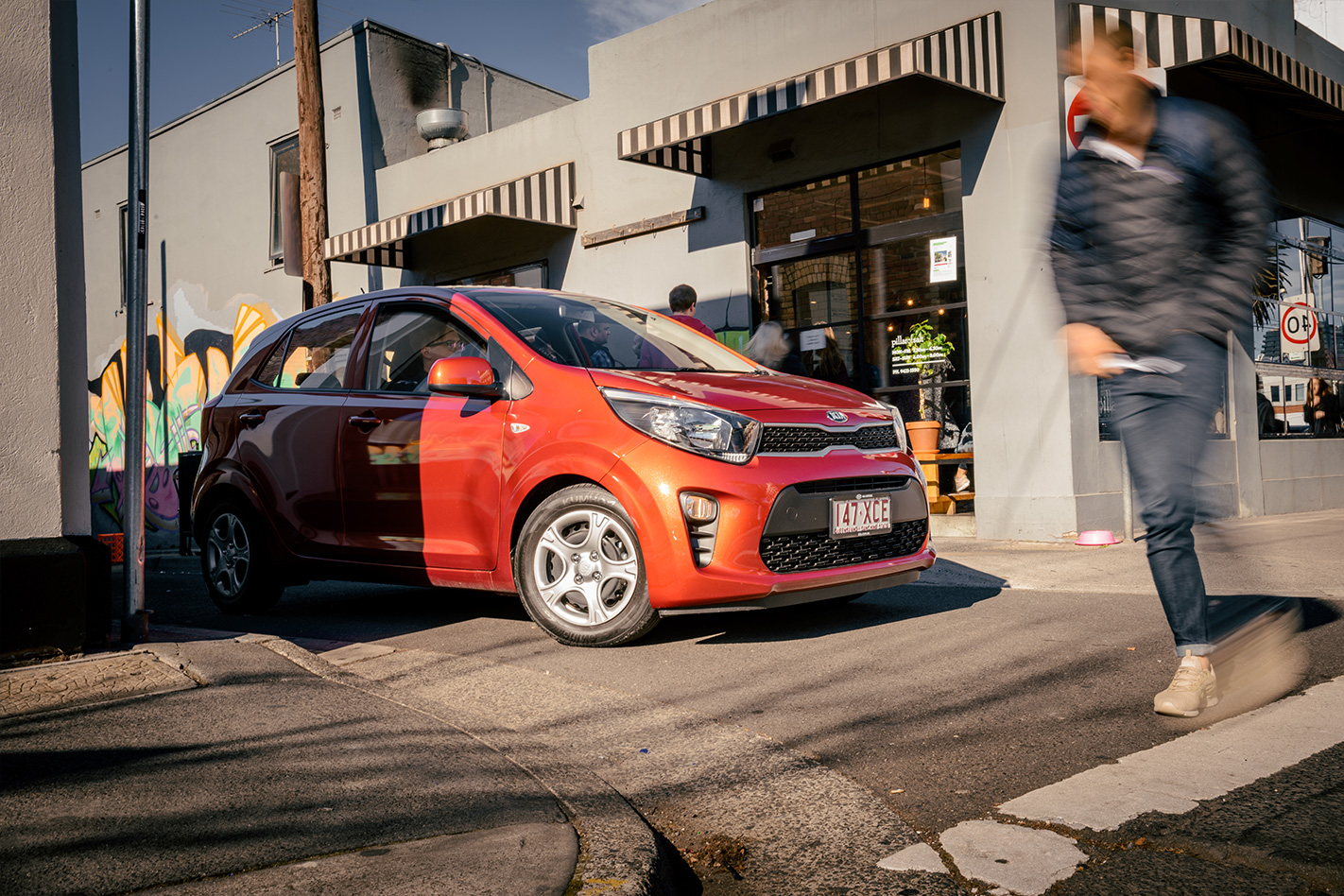
Nestled inside the cabin, I let out a deep sigh, relaxed back into the seat, slotted the shifter into first, and eased out the clutch to begin the trip home. I creeped out of the carpark … and then damn near put my head through the windshield.
You see, during my soiree with the COTY contenders, I had forgotten about the light-switch sensitivity of the Picanto’s middle pedal. A mere stern look in the brake pedal’s direction is enough to have the Kia stand on its nose.
It caught me by surprise during the early stages of our time together, and once more at the end of COTY, but otherwise hasn’t been an issue. I’d rather a strong reaction from the brake pedal than sponginess and lethargy. It’s easy to adapt, and revised pedal pressure becomes second nature.

There have been two instances recently where I’ve found myself stomping the middle pedal, both times to avoid drivers who have sailed into roundabouts and not given right of way. I can attest my orange micro machine can come to a standstill pretty darn quick.
Which brings us neatly to another point: our Picanto lacks Autonomous Emergency Braking due to the system not being homologated at the time of launch. However, full credit to Kia’s local arm for ensuring a properly calibrated system is now ready for Australia, and having it fitted as standard on all models built since June. The system operates at city speeds and includes a forward collision warning.
It’s a nice safety net to have, but you can also take comfort in the fact the Picanto’s brakes will stop you on a dime if need be.
Now, I’m off to get my nose straightened after cracking it on the steering wheel.
Update #5
WANT to feel inadequate? Drive a Kia Picanto into a carpark filled with a supercharged Tickford Mustang, a duo of Porsches, a Golf R wagon and a Renaultsport Clio 182 with the intent of joining the cohort on a spirited run through some of Melbourne’s best driving roads.
It was like I’d walked into a skirmish armed with a pea-shooter, while my opponents were packing more firepower than a Southern Texan militia.
I might be getting a little ahead of myself here. I should explain why the Picanto S and I were surrounded by such a formidable armada.
It was painfully early on a Sunday morning, and I’d forced myself out of bed and some caffeine down my gullet in order to take part in a Drive against Depression ‘Treasure Hunt’ outing.
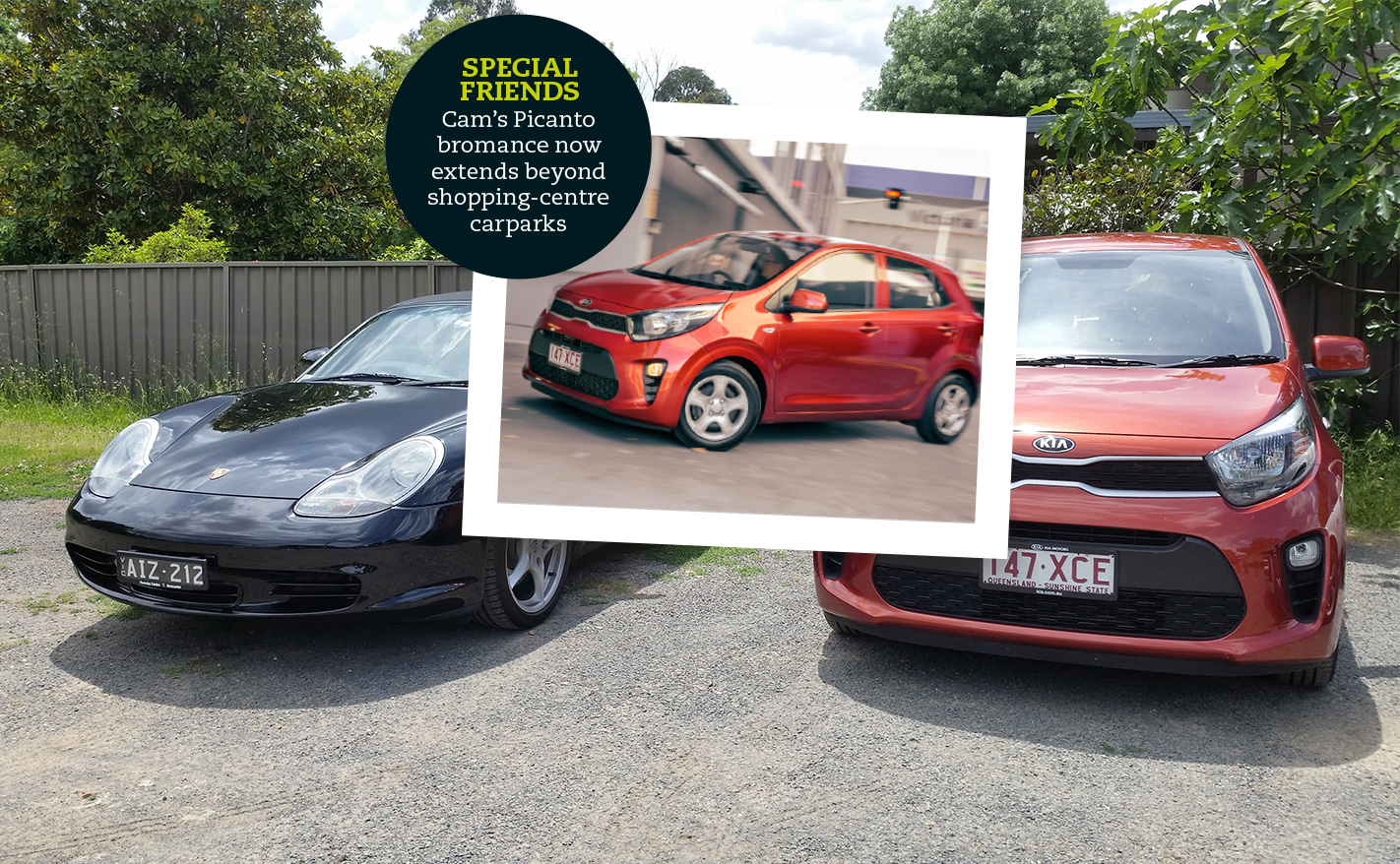
Drive against Depression is a wonderful charity intended to bring a community together around cars and driving, and using that opportunity to raise much-needed awareness surrounding mental health. While I was enamoured to the cause, I must admit there was a dual purpose to my attendance.
It was time to put the Picanto’s dynamic abilities on trial. It had become a secret point of shame that with the Picanto’s departure rapidly approaching, I was yet to have a proper back-road blat in my plucky little manual hatch.
There was some friendly banter over being relegated to a mere Kia Picanto for the weekend by my driving compatriots as we mingled before the event’s start. But given that Porsche wasn’t offering me a GT2 RS for the weekend, this event was going to be an exercise in making the most of 62kW.
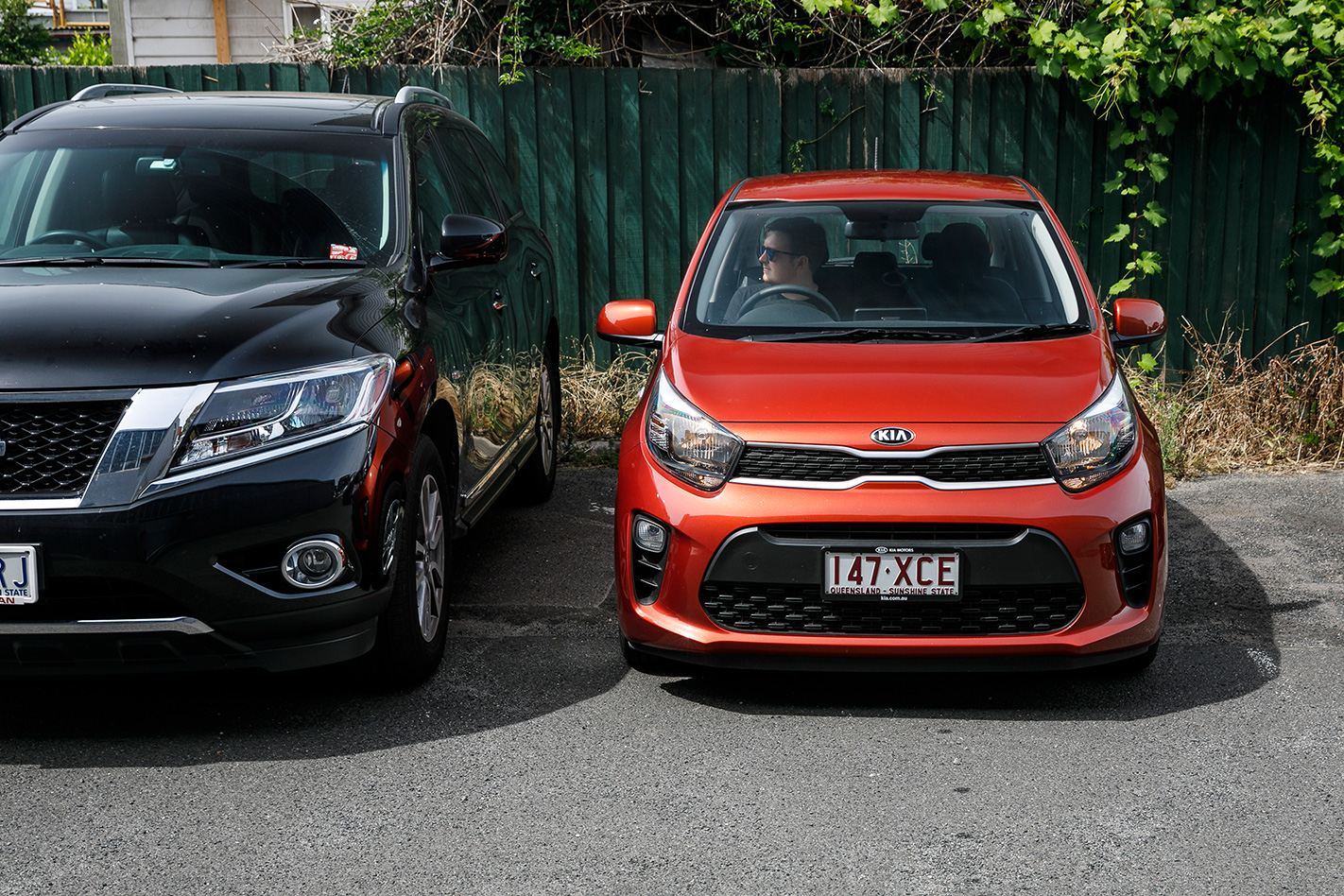
Spoiler alert: the little Kia hatch is a riot.
This shouldn’t be a surprise to enthusiasts with a lack of badge prejudice. The tempting recipe of locally tuned suspension, rev-happy 1.2-litre atmo engine, five-speed manual gearbox, and sub-tonne kerb weight proved predictably enjoyable.
I found myself behind the Tickford Mustang tracking up Chum Creek Road – a nuclear warhead to my wrist rocket – and yet I kept the blown Ford in my sights. The Picanto is supremely chuckable, pitching into corners eagerly, nestling onto the outside front wheel, even cocking a rear at times.

Gear selection was important to keep the engine singing above 4000rpm, but the reward is unexpected spunk. As I’ve previously mentioned, the Picanto’s steering changes weight depending on speed, and while it isn’t completely numb, with some feedback from the tarmac sent back through the wheel, it doesn’t telegraph clearly enough when the front tyres start to lose grip.
Yet what a joyful day to spend on brilliant roads, for a great cause, in fine company, shifting gears via a clutch and a delightfully light shifter, maintaining momentum through bends, and driving the tyres off my baby Kia.
If you dismiss the Picanto’s ability to put a smile on your dial simply because of its engine size or its badge, that says more about you than it does the car.
Farewell
The final days of 2017 were rapidly receding, and the moment had finally come to hand back the keys to my Kia Picanto long termer. Nestling myself into the cabin for one final farewell, I realised just how much I’d miss my zesty buddy.
In the lead-up to our paths diverging, I’d been driving the Kia Picanto like a teenager let loose on his parent’s car for the first time. At every traffic light grand prix, I rowed my way hastily through the gears. The seven-point-whatever per 100km fuel consumption is evidence of this. The Kia Picanto will happily oblige an overly enthusiastic driver, yet at the same time, you can plop an in-law in the passenger seat and glide around town smoothly and unobtrusively, without becoming a chicane for other traffic.

A number of trips this month had three (and sometimes four) people piling into the Picanto. Being a micro hatch, rear occupants were never going to be bragging about legroom, but you don’t have to fold like a piece of human origami to ride in the back. Headroom is ample, even for adults, and the only real complaint goes to road noise, yet the Picanto remains one of the best in class for NVH.
It would be remiss of me to not mention Kia’s cherry-on-top, seven-year, unlimited-kilometre warranty. No other manufacturer will match this year round, and the Korean brand topped the US-centric J.D Power initial quality study last year. Some strong negotiating skills could fetch you a low $14K drive-away price. And Kia’s capped-price servicing also offers great value, with the first stop-off at a dealer due at one year or 15,000km, costing $240. Over the course of seven years of ownership, or 105,000km, servicing the Picanto comes in at an average of $364 every 12 months.

Reflecting on our six months together, the Picanto didn’t miss a beat. It was as capable and fun during a backroad blast with a pair of Porsches as it was folding the rear seats and hauling furniture. For an inner-city dweller, you couldn’t ask for much more from a car, especially one this affordable.
Just before my Korean friend departed the Wheels garage, it had one final photoshoot, alongside Inwood’s shiny new hybrid Lexus. For the same price as a single LC coupe, you could have a veritable fleet of Picantos. What would be more fun? One Japanese grand tourer, or 10 Picantos and enough spare change left over to hire a track for an impromptu one-make race series with your mates? It’ll never happen, but I know which option I’d prefer.
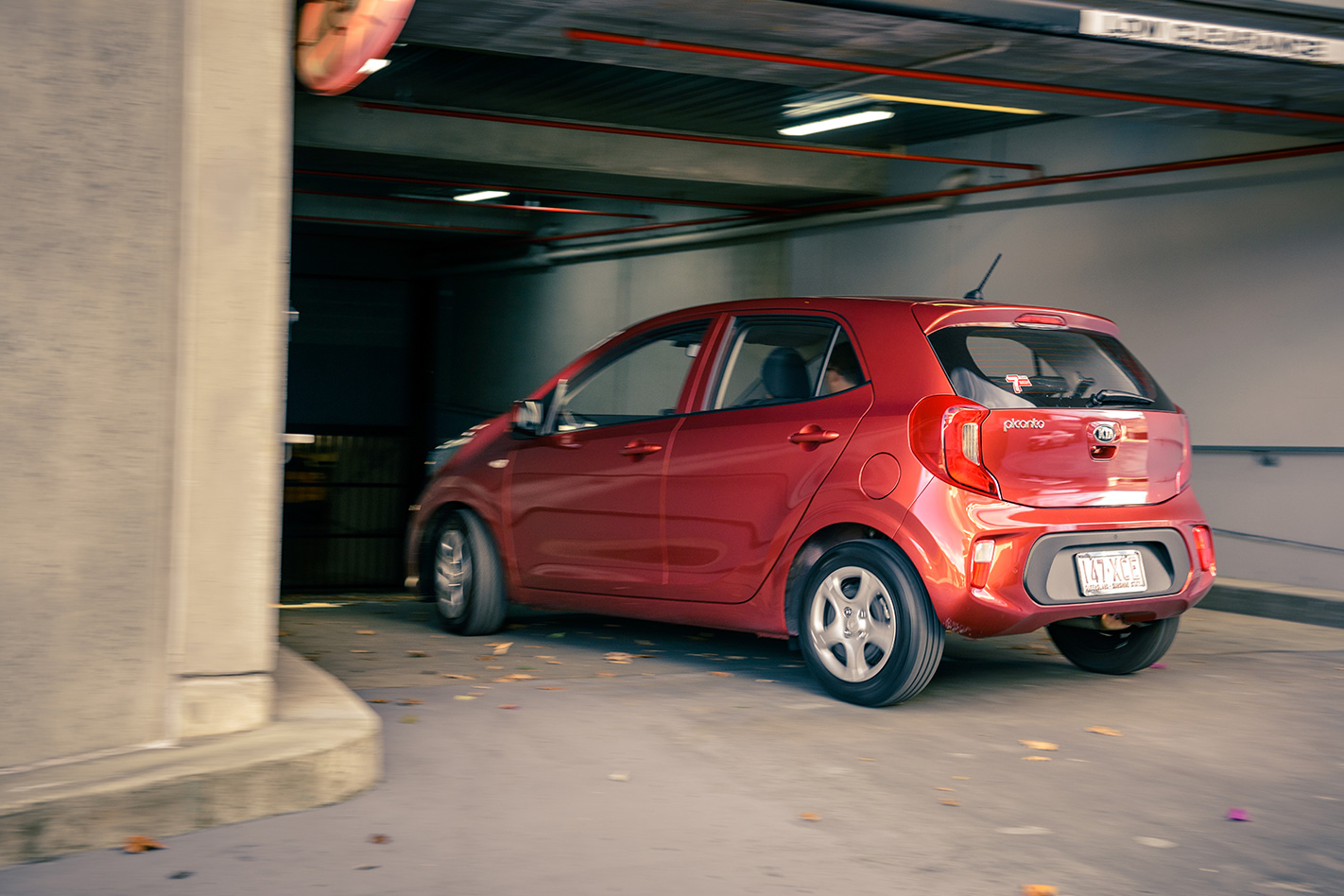
While I wait to see what’ll fill the Picanto shaped hole in my heart, I’ll console myself with the knowledge Kia’s local arm is in the process of bringing the turbo GT variant to Australia. A boosted 1.0-litre three-pot in a diminutive hatch with locally tuned suspension is my kind of spicy Kimchi.
Save yourself the ink (and money)
While the options list is mercifully brief for the Picanto, there are no boxes I’d recommend ticking. Fitting 14-inch alloys is a $1201 option, with 16-inch rims setting you back $1439 if the standard-fit steelies offend your modern sense of style. Front corner parking sensors are a $616 addition for anyone having trouble parking, though everything else I’d place in the ‘naff interior gubbins’ bracket. If it was my choice, I’d opt for the standard Clear White paint and save another $520.
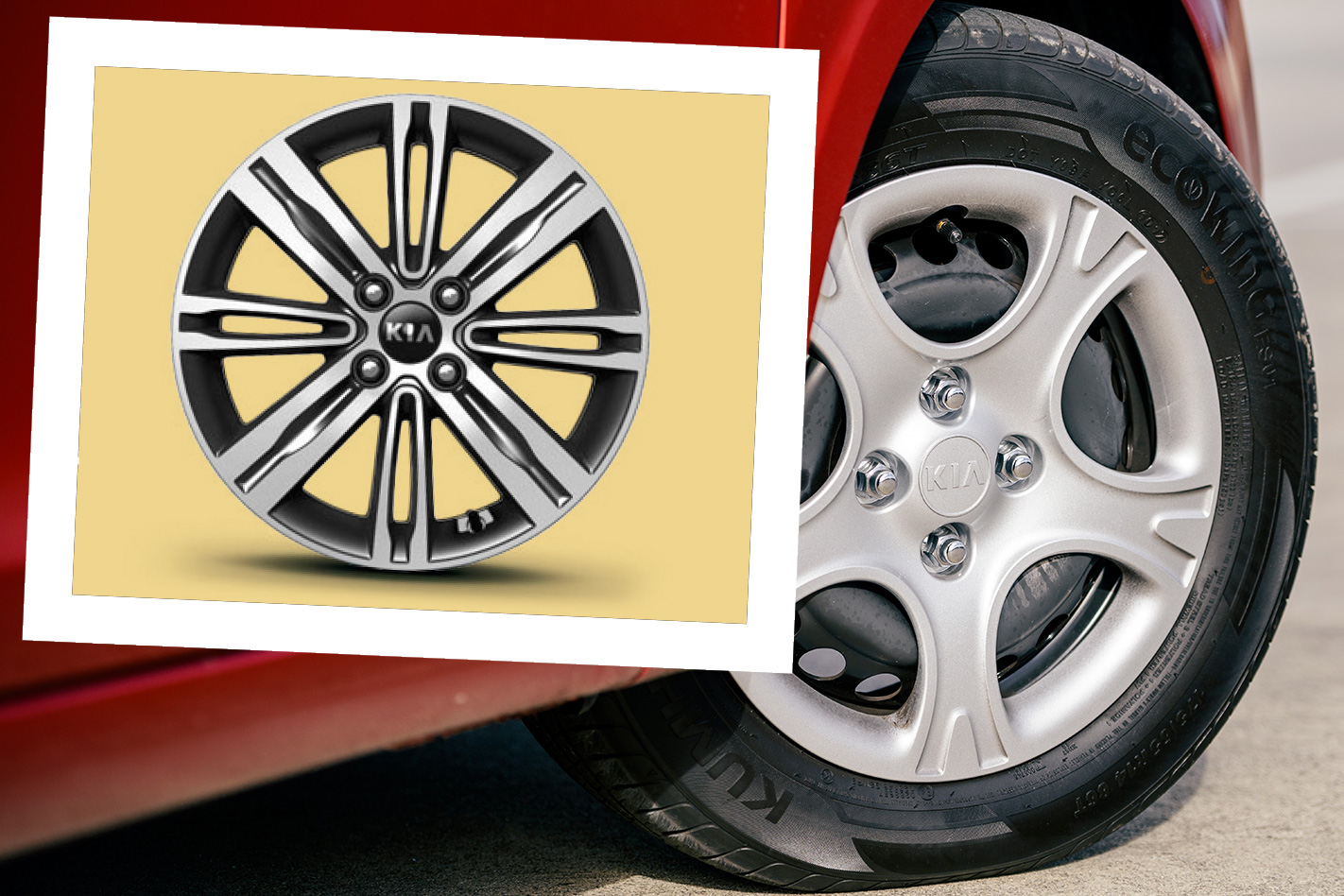
Caution: fur baby on board
I don’t like babies, and I’m not a big fan of most kids, so the Picanto went without a test from Generation Fidget Spinner. Dogs, on the other hand, are more my cup of tea, so after nicking a friend’s black Labrador, the Picanto and I had a weekend of parks, fetch, and barking. The parcel shelf is easily removable, and the boot space is roomy enough for a decent-sized dog to lie down. If you want to add a four-legged mate to your family instead of a miniature human, the Picanto will fare just fine.




